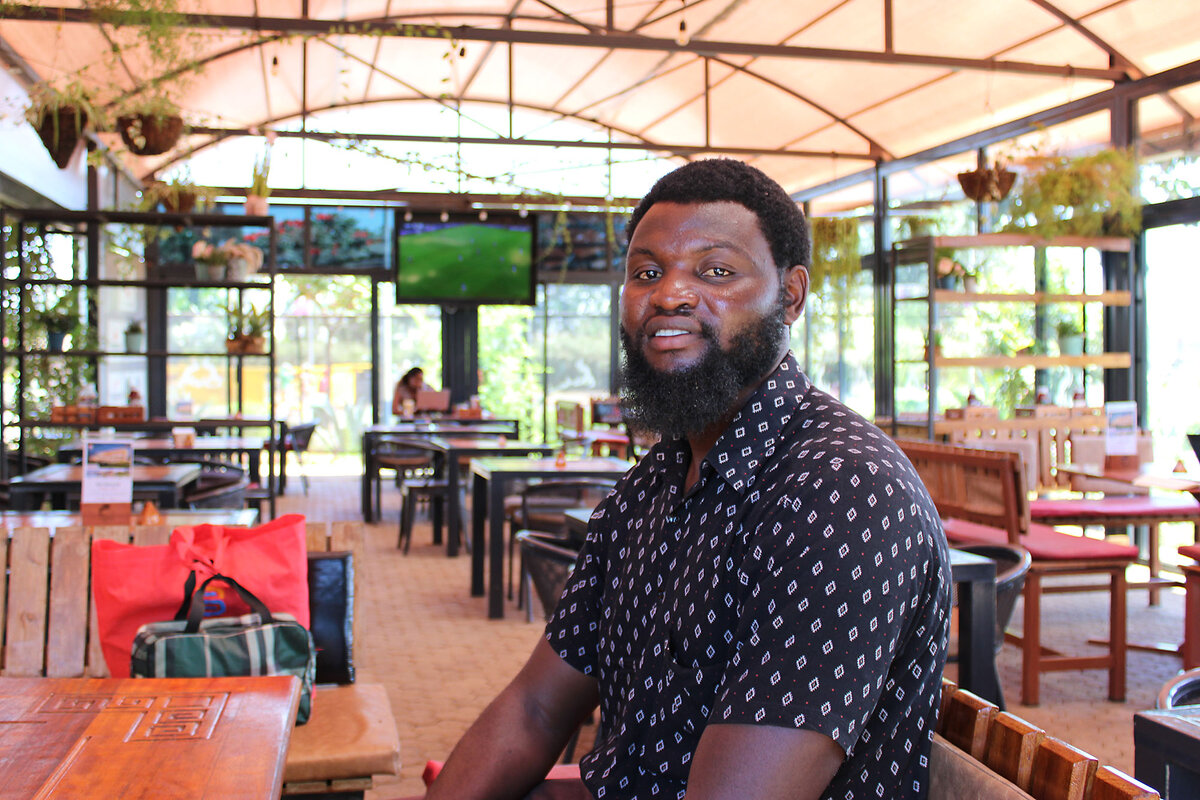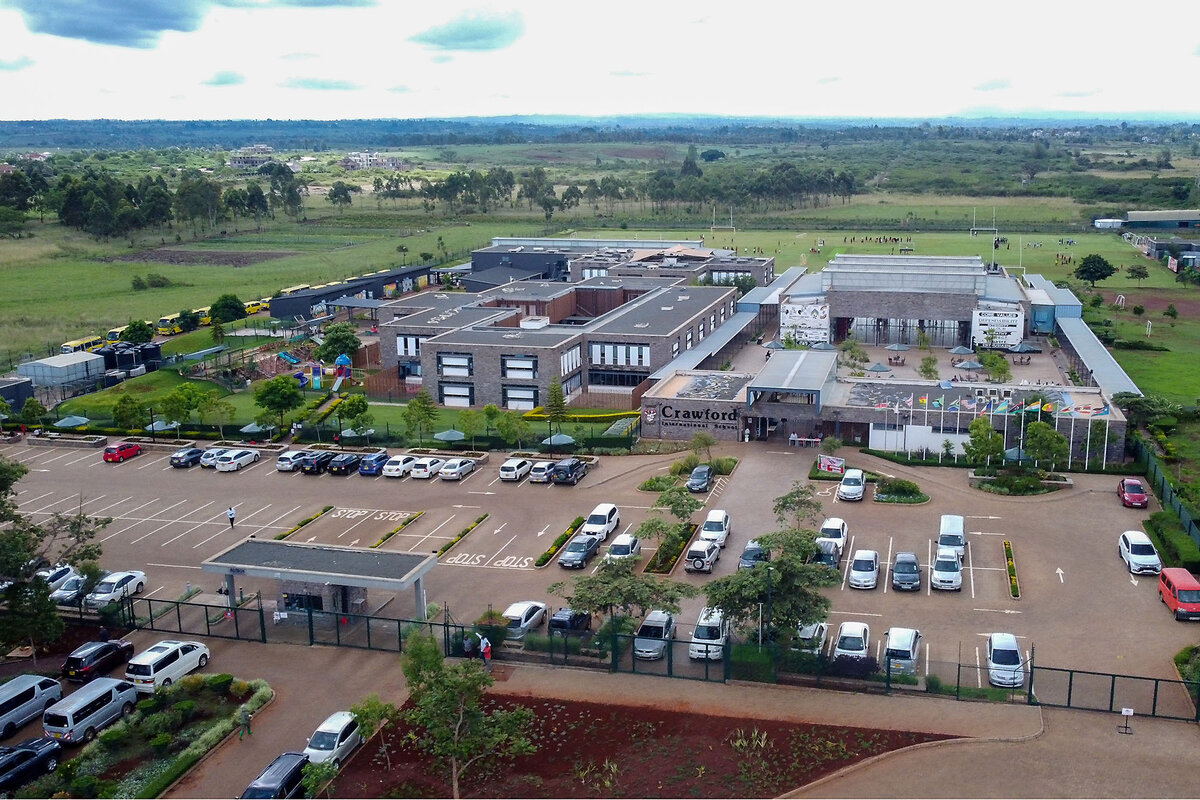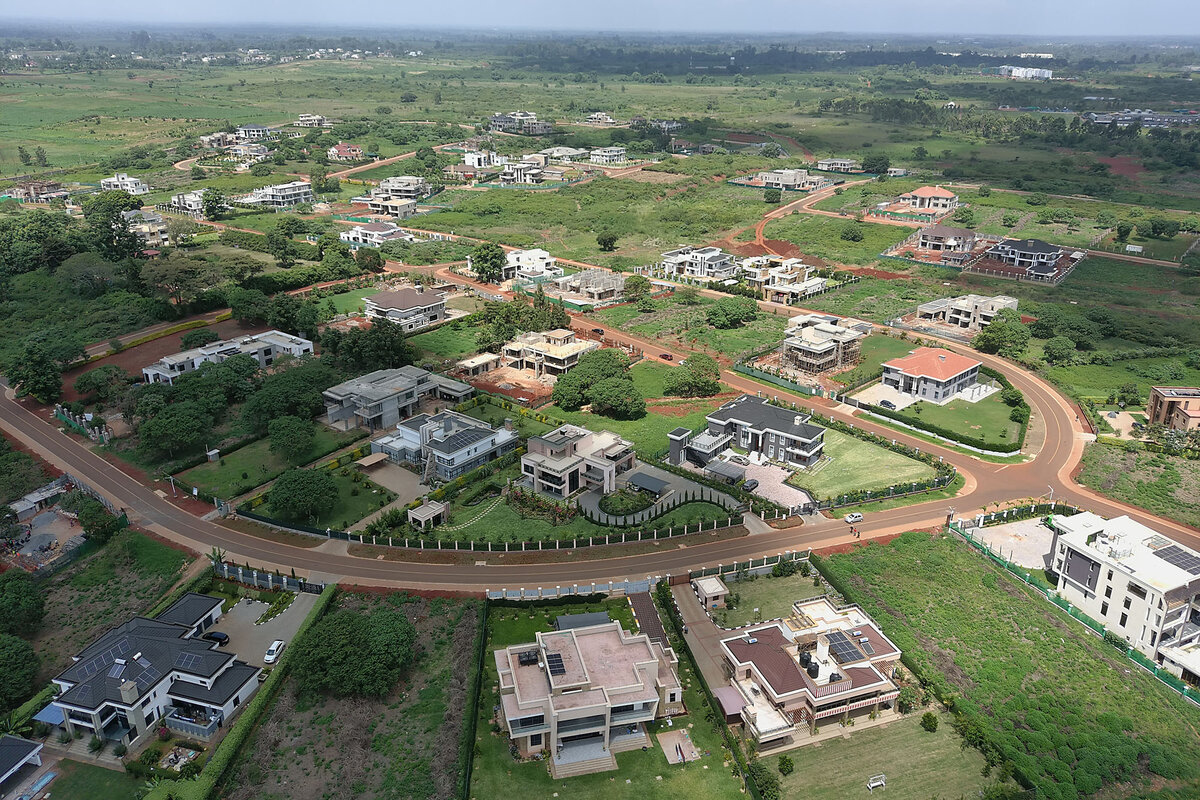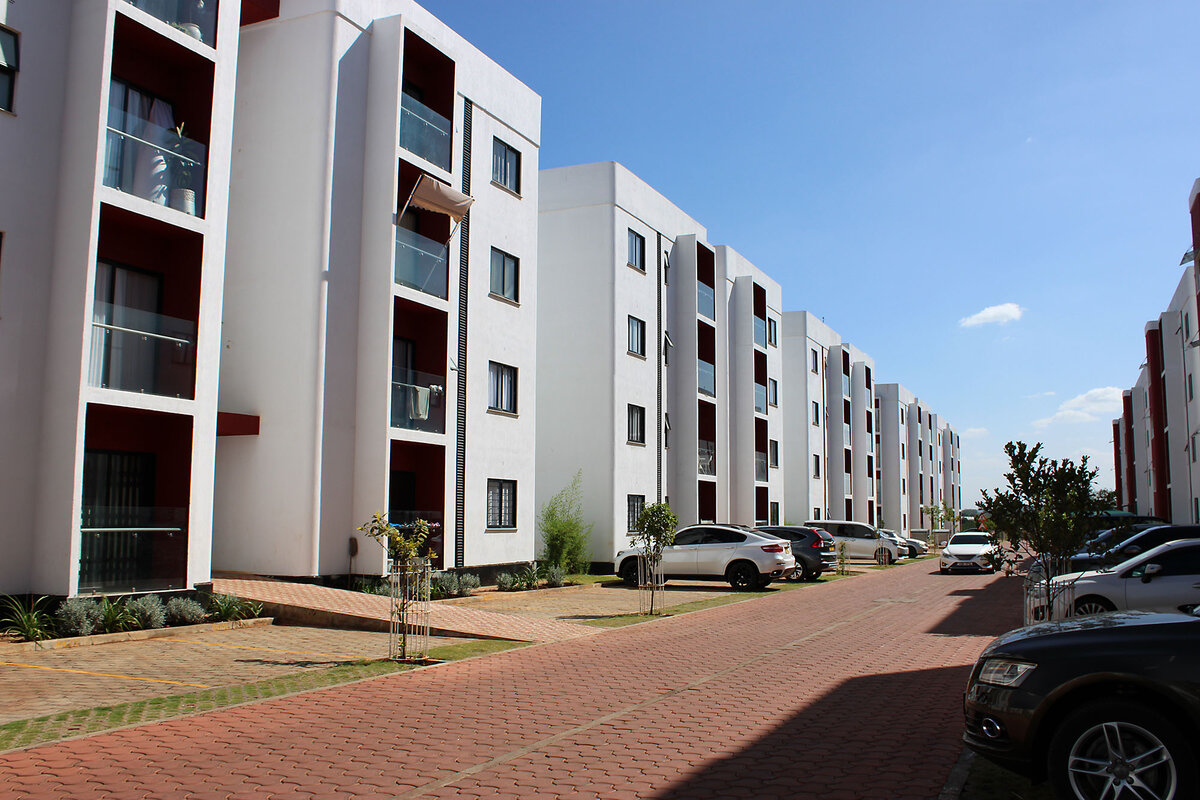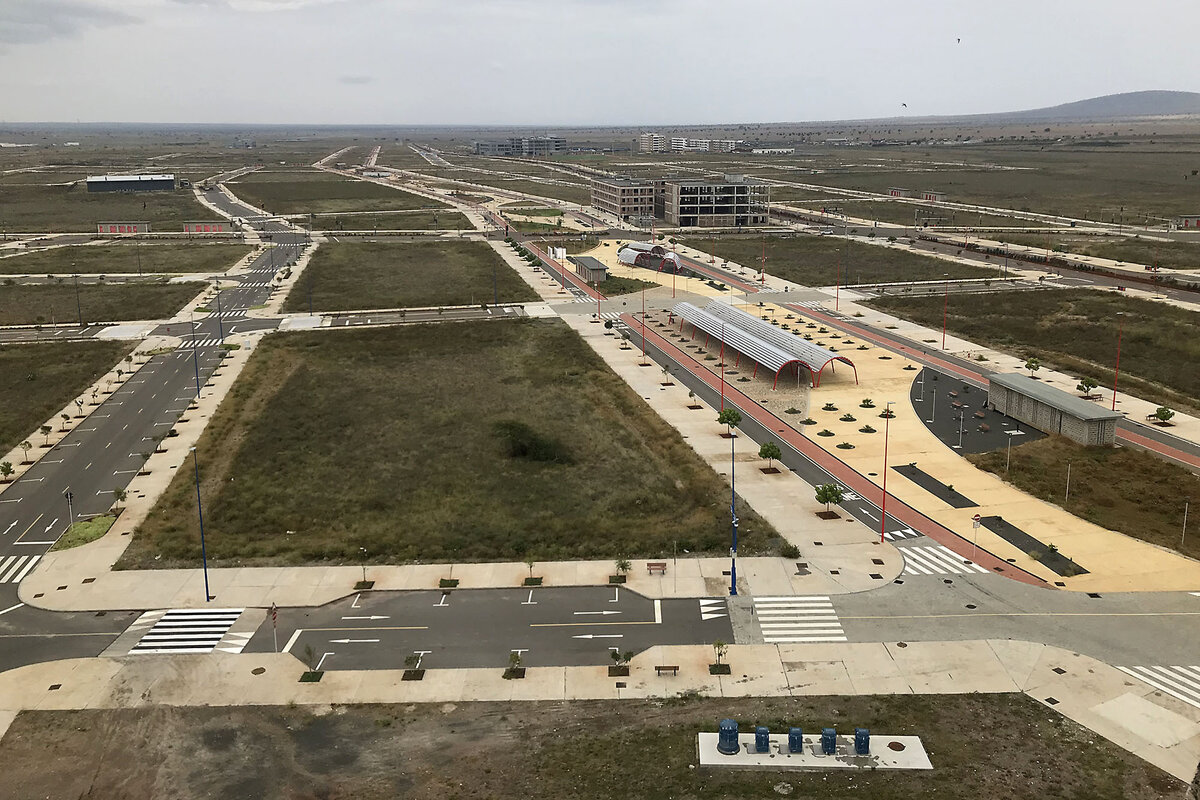The cure for congested cities? Kenya is building new ones.
Loading...
| Tatu City and Konza Technopolis, Kenya
Each afternoon, Hosea Makori leaves the cramped two-bedroom apartment he shares with his family in a busy, working-class Nairobi suburb and boards a bus for another world.
As the bus makes its way out of the city, the polluted air clears, and time appears to slow down. High-rise concrete blocks give way to farmland. Soon, advertising billboards begin to appear over the fertile red soil, offering sleek two- and three-bedroom apartments in glossy complexes that look like stock photos of an American suburb.
This is Tatu City, a new urban development meant to be everything Nairobi is not. Instead of a maze of traffic-clogged streets, wide avenues run through carefully planned residential and industrial areas. Instead of burst water pipes and random power cuts, Tatu City residents have reliable, privately managed water and electricity supply.
Why We Wrote This
A story focused onIn recent years, satellite cities have begun sprouting on the fringes of many African cities, promising an orderly, modern alternative to their grit and congestion. Many of the projects have flopped, but Kenya’s Tatu City is poised to be an exception.
Mr. Makori’s 90-minute commute drops him near the call center where he works on a neat, shrub-lined road in the development. Being here is “totally uplifting,” he says.
Tatu City is one of a host of new satellite towns cropping up next to Africa’s major cities. Starting from a blank canvas, they promise to provide an alternative to the overcrowded metropolises they neighbor, as well as hubs of economic growth.
Many of these projects have failed to live up to the near-utopian visions that inspired them, their plans too ambitious for government budgets or out of sync with local demand.
Tatu City is shaping up to be a rare exception.
A “small Europe”
At the gates, guards in Tatu City T-shirts greet visitors warmly. They hand out note cards explaining rules for “The Safest City in Africa!” No driving over 40 kilometers (25 miles) an hour. Make a complete stop at every stop sign. No littering.
“We want to have a small Europe here,” explains a traffic enforcer.
Her pronouncement speaks to the vision for many African satellite cities, as places apart from the continent’s urban jungles. They promise efficiency, order, and not infrequently, a modernist landscape of metal and glass.
For instance, in 2018 Senegalese American pop star Akon announced he was building a $6 billion futuristic metropolis outside Senegal’s capital, Dakar, inspired by the fictional city-state of Wakanda from the movie “Black Panther.” His plans, which have not gotten off the ground, included luxury skyscrapers, an oceanside resort, and a university, all to be operated on Akoin, the pop star’s cryptocurrency.
Tatu City has distinguished itself by not biting off more than it could chew, experts say.
“Where you’re building thousands of hectares [and] talking about billions in investment, these are going to be risky projects,” says Jeffrey Mason, head of policy at the Charter Cities Institute, a nonprofit research organization based in Washington. That is especially true in Africa, he adds, where nothing, from basic facilities to political stability, can be taken for granted. “The economics have to work,” he says.
That has led Tatu to take a measured approach, building no more than local demand can absorb.
In 2008, the international property development firm Rendeavour bought a former Belgian-owned coffee estate an hour outside Nairobi. The surrounding land is still mostly occupied by coffee farms, with the occasional informal neighborhood wedged among rolling hills. But slowly, as congestion within Nairobi has increased, the city has crept outward, nibbling away at these fields.
Funded by shareholders from New Zealand, the United States, Norway, and the United Kingdom, Rendeavour hoped to offer a hub for businesses while absorbing some of the population of rapidly urbanizing Nairobi.
That meant making sure the site had good industrial land with reliable services. For instance, Tatu City runs its own water, internet, and power services, dodging the blackouts and shortages Nairobi residents and businesses face on a regular basis. The developers also negotiated for the city to be designated a special economic zone, offering businesses low tax rates and other financial benefits. So far, over 100 companies have opened their doors in Tatu City, employing about 25,000 people.
But most employees, like Mr. Makori, don’t actually live here. Today, Tatu City has a population of around 5,000. Some live in rows of neat white apartment buildings whose one-bedroom units sell for around $45,000, while others occupy lavish villas.
Befitting a town this size, the development has two schools, a grocery store, a pool, and a corner market. Tatu City is meant to house a quarter-million residents one day, but developers acknowledge that this could take decades longer than originally envisioned.
Ghost towns
Most global cities have evolved slowly over centuries to meet the needs of their inhabitants. Lofty plans for new urban areas in Africa, however, are a response to the fact that the continent doesn’t have the privilege of time. Africa is urbanizing faster than any other region in the Global South.
That leads developers to sometimes rush into overly ambitious satellite city projects.
Some 80 kilometers southeast of Nairobi lies another satellite city project that illustrates just such a cautionary tale. Announced to great fanfare by the Kenyan government in 2008, Konza Technopolis was supposed to herald a new era of investment as the heart of the country’s aspirational version of Silicon Valley, the Silicon Savannah. Plans show a tech-driven smart city of 100,000 people with underground waste disposal, electric buses, and a wildlife corridor.
Seventeen years later, however, no one has moved in. In May, the new campus of a science-and-tech-focused university will open here, but for now, the only people around are construction workers and administrative staff.
As the years pass, it becomes more difficult to convince potential investors to choose the site, says Jonathan Kaloyo, a member of a group that buys plots of land in Konza for resale. He holds out hope that the infrastructure installed so far will not be for naught, but laments that many of the plans were “supposed to be completed a long time back.”
Many satellite city projects on the continent have hit similar stumbling blocks. For instance, what was supposed to become the “New York of Africa” outside Johannesburg failed to attract enough buyers to become reality, and a more moderate housing development is now under construction.
Back in Tatu City, Mr. Makori clocks out at 3 a.m. and gets back on the bus that will take him home. His parents moved from the countryside so that he might have an opportunity like this one. It is a responsibility he does not take lightly.
He is waiting for the day when he can move out on his own, and also get his parents a place away from the stress of Nairobi. Maybe even here.
“We are all meant to dream,” he says.






